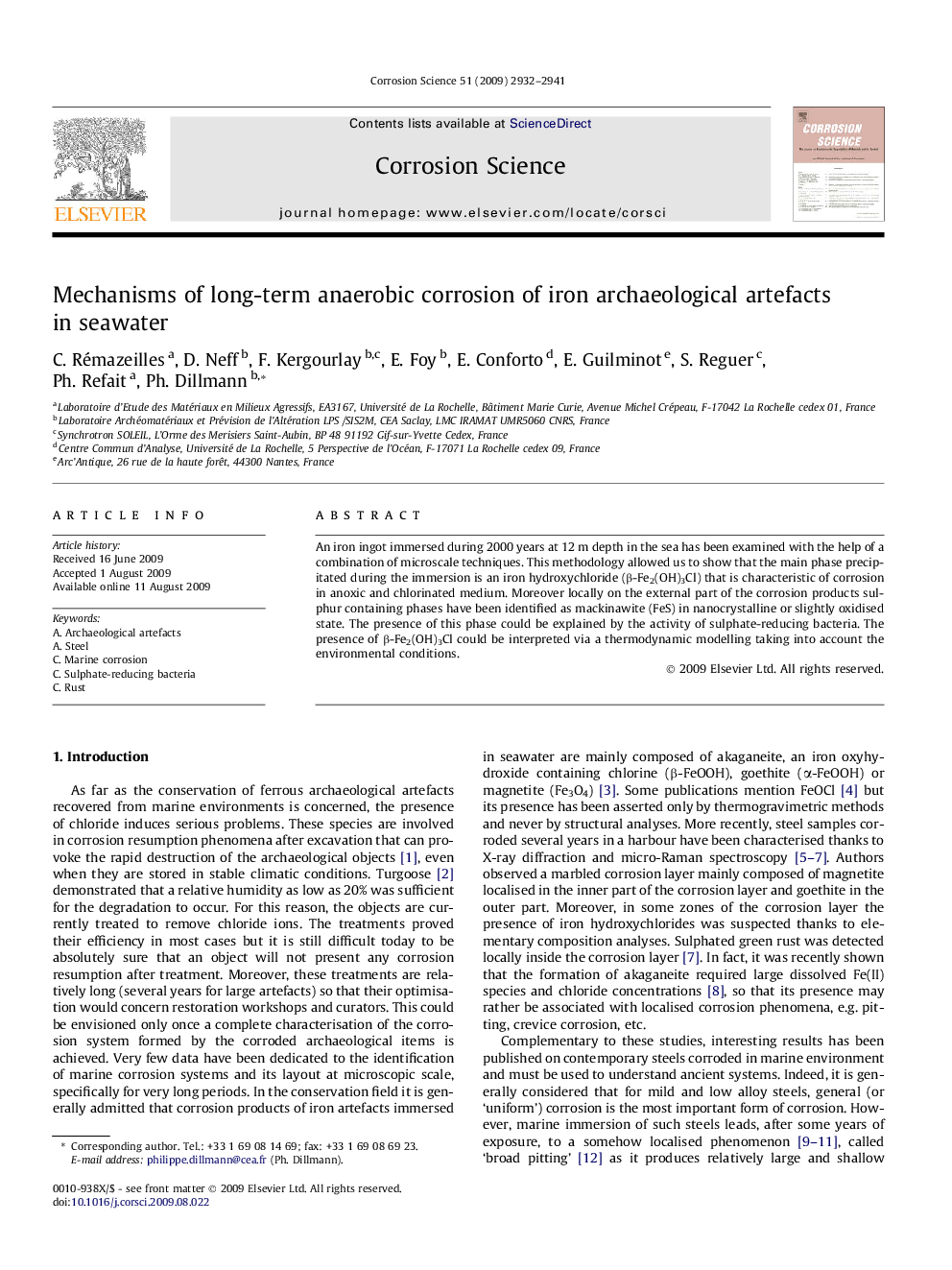| Article ID | Journal | Published Year | Pages | File Type |
|---|---|---|---|---|
| 1470783 | Corrosion Science | 2009 | 10 Pages |
Abstract
An iron ingot immersed during 2000 years at 12 m depth in the sea has been examined with the help of a combination of microscale techniques. This methodology allowed us to show that the main phase precipitated during the immersion is an iron hydroxychloride (β-Fe2(OH)3Cl) that is characteristic of corrosion in anoxic and chlorinated medium. Moreover locally on the external part of the corrosion products sulphur containing phases have been identified as mackinawite (FeS) in nanocrystalline or slightly oxidised state. The presence of this phase could be explained by the activity of sulphate-reducing bacteria. The presence of β-Fe2(OH)3Cl could be interpreted via a thermodynamic modelling taking into account the environmental conditions.
Related Topics
Physical Sciences and Engineering
Materials Science
Ceramics and Composites
Authors
C. Rémazeilles, D. Neff, F. Kergourlay, E. Foy, E. Conforto, E. Guilminot, S. Reguer, Ph. Refait, Ph. Dillmann,
